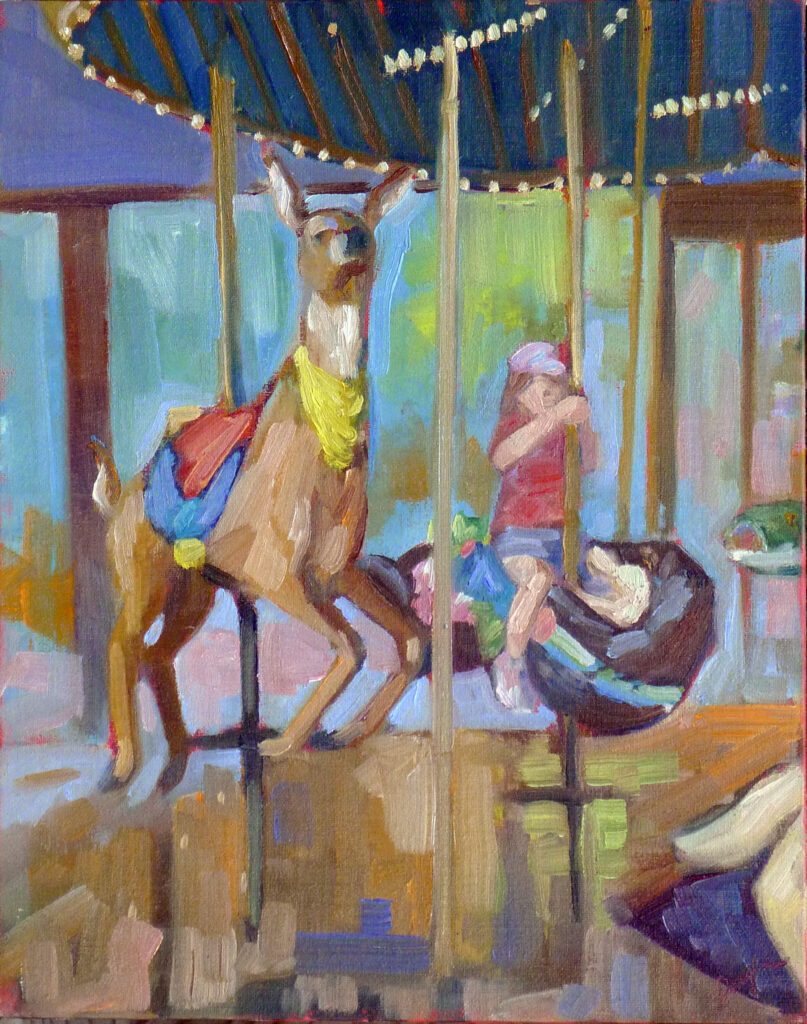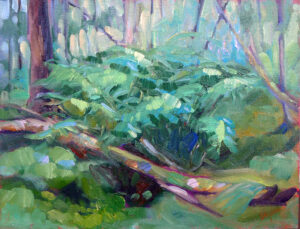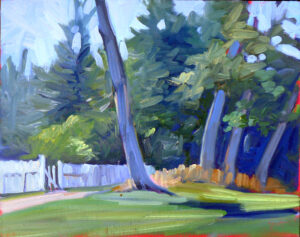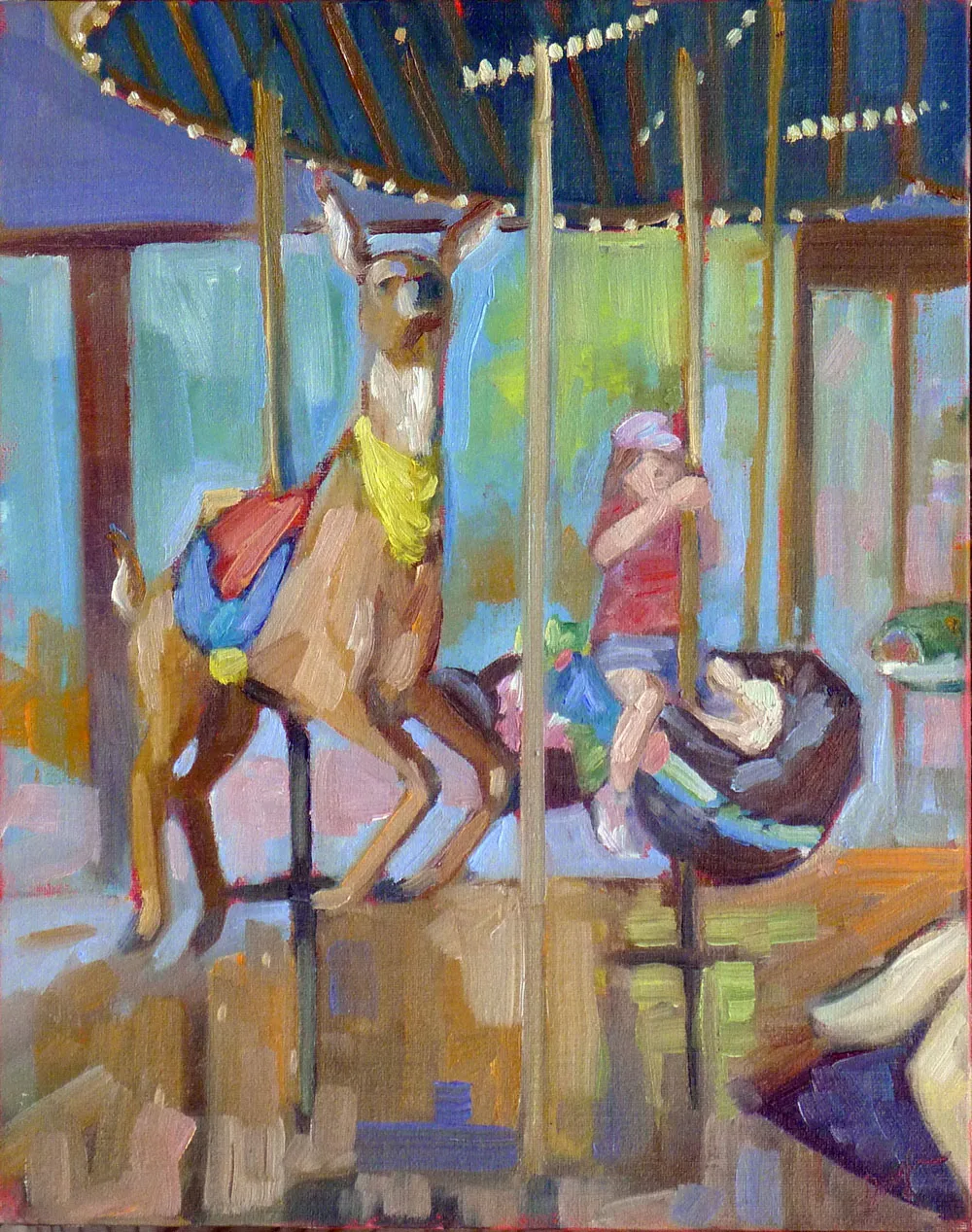
On Friday I wrote about a painting I’d been carrying around in the hope of finishing, only to realize that it was already done. That provoked an outpouring of emails. Most of us have had the opposite experience, where we painfully noodle a good painting to death.
Sometimes, paintings are finished but are just plain bad. No amount of reworking can fix a fundamental design flaw. The classic Hail Mary pass in this situation is to add a tchotchke—for example, a seagull in flight. These last-minute additions merely complicate bad design, they don’t resolve it. Sometimes fundamental design flaws can be resolved by recropping the canvas with a knife or saw, but most are destined for the burn pile. This is why painting teachers harp on sketching and planning.

Apply formal standards of criticism to your own painting
Assuming the fundamental composition is solid, the painter can analyze his own work against the formal elements of design, which include:
- Focal point—is there a focal point and series of focal points, and is the viewer’s eye directed to them with contrast, detail and line?
- Line—is line used effectively and reinforced in the painting?
- Value—does the painting have a solid value structure? Does it need to be restated or is it clear?
- Color—is there a cogent color scheme? Is it expansive enough to be interesting?
- Balance—does the painting hit that sweet spot between static and riotous?
- Shape and form—are there interesting shapes in the painting?
- Texture—is there enough paint on the canvas to make the brushwork compelling?
- Rhythm and movement—is there energy driving you through the canvas?
If any of these elements are unfinished or poorly realized, the painting is not done.

Listen to your gut.
I don’t like the imperious “Not another brush-stroke!” approach to telling people to not overwork a painting. After all, we can’t know where the finish line is unless we occasionally overshoot it. But our own gut often tells us the same thing. I generally work on paintings until I’m tired of them. That’s my intuition speaking.
Be careful whom you ask for critique
“I painfully witnessed someone undo a beautiful painting yesterday in the figure studio,” a student told me. “I stepped into a continuation of a pose from Monday. The painting was a striking likeness of the model and quite charming. It improved with a background and some tweaks during the first 25-minute sitting. Then the artist asked the studio for suggestions. From there, it was a snowball downhill.
“There were more questions and tweaks at every break during the three-hour session. The portrait ended up muddy, the face too fat, the likeness and charm gone.”
With very few exceptions I don't solicit criticism from my peers. When it’s offered, I carefully consider the source. In most instances, I’m better off setting the work aside and reviewing it when I’ve disengaged emotionally from the work.
Furthermore, that painter was doing a small (9x12) head over a six-hour session. That’s simply too long to fuss over such a tiny canvas. He or she would have learned more doing three two-hour studies in the same time-frame.

Stop when you’re tired.
One of my students has a quilting rule of putting her work away immediately when she hears herself saying, “I’m going to sew just one more seam today.”
I push past that limit every time I sew, and it always results in a long, irritating session with a seam-ripper.
Are you hungry, thirsty or tired? Are you rushing because you only have a few more minutes left to work? If you’re starting to lose focus, stop and put the work away, because whatever you do next won’t be pretty.

